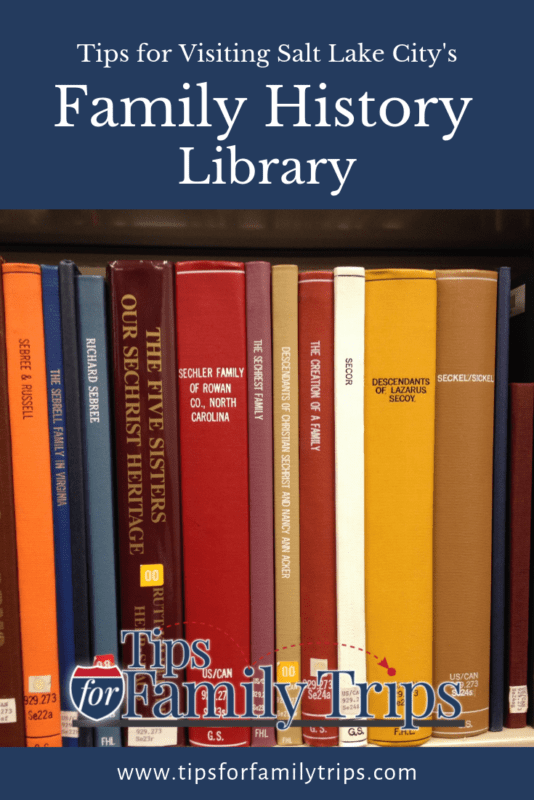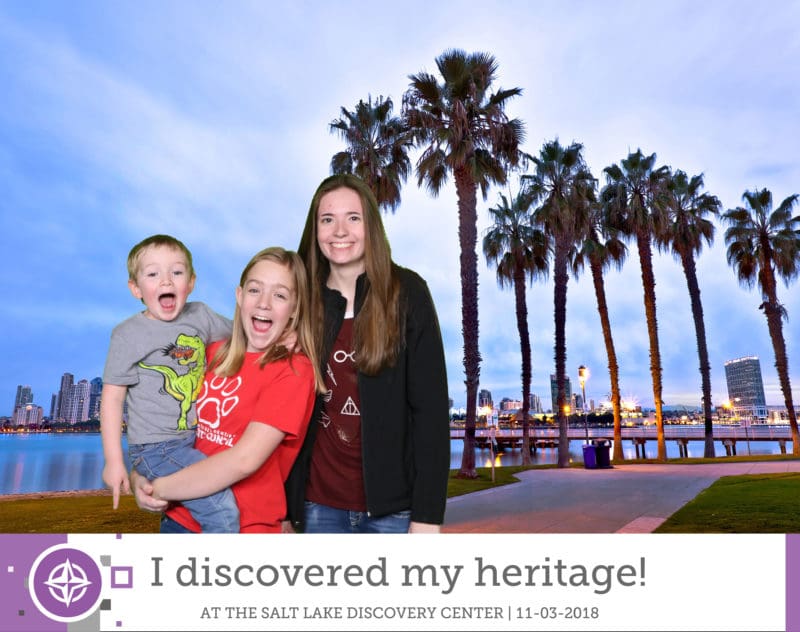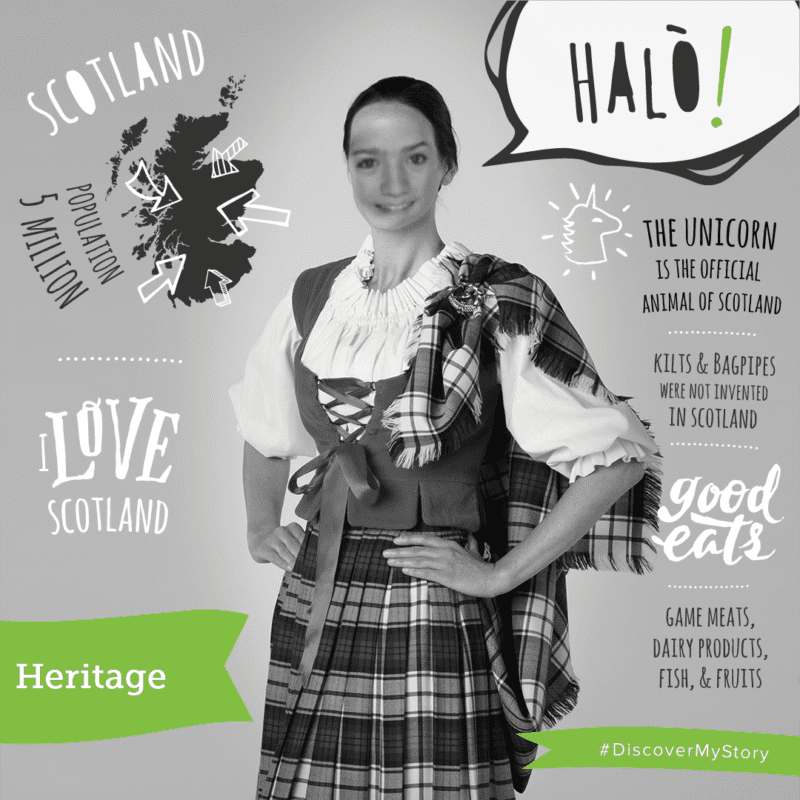Hello!
It’s Cathy from My Book a Day. We have 3 kids (18, 12, and 4). There are things that are easy to do with our wide range of ages, and some things that are a bit more tricky. Something we all enjoy doing is going to the Family History Library in Salt Lake City.
Family History is a hobby and I've pursued off and on since I was a teen. It's amazing how much easier it is now than even a couple of years ago. It is a fun hobby to pair with travel, because when we can connect our family with a place we visit, it makes the memories even more special.
If you are planning a trip to Salt Lake City, consider a stop at the Family History Library downtown to see what you can learn about your family. The vast family history resources at the Family History Library are available to all, free of charge.
Here's what you can expect when you visit the Family History Library in Salt Lake City.

Family Friendly Updates
If you haven’t been to the Family History Library in the last few years, you really need to go again! A couple of years ago they made some huge changes. They added a Family Discovery Center on the first floor. This made it possible for us to take our whole family and have all of us enjoy it!
The first thing that is going to happen when you walk through the door is that you will be greeted by a smiling missionary. They hand everyone in your party an iPad (except maybe the youngest kids) and help you to get started.
Family Discovery Center
You’ll take a selfie and log in or create your Family Search account. This is where the fun begins! Take your iPad to several different stations on the first floor of the library and you “dock” it. The iPad has all of your family history information once you log in, and it shows you so many neat things about yourself and your family on interactive screens.
The first station shows you who you are related to, including famous people and others who are visiting the library at the same time as you. Not only does it show pictures, it shows how you’re related. Our family has a neat story about this station. There was a young man there at the same time as we were. He saw one of our kids’ pictures on the screen at this station. He saw that they were 4th cousins, so when he ran across her in the library, they were able to connect and see just how they were related. As memories go, this was an instant favorite!

The next station tells you about your name, both first and last. There are stats about the origins of your name, how many people in the country share your name and so many fun things like how much gas cost the year you were born, or how much it cost to go to a movie that same year. Another really fun thing about this station is that you can select an ancestor and get the same information. The last time we were there, I enjoyed looking at these stats on one of my grandparents. It’s amazing how different things are now than they were then. That’s one thing I took away from this particular section.
There’s a section where you can read stories and things about your ancestors. You can read the same stories at familysearch.org, but there’s just something really neat about seeing your ancestor on the large screens they have. It’s complete with a timeline of your ancestor’s life. You can see where all the major events of their life (birth, marriage, kids, death) fit into the framework of history. It’s really special.
The last section has a few different things. There are a couple of different places you can take pictures. You can take a group shot in front of a green screen. The background images they have are varied and so fun! You could pick a favorite temple, or a favorite vacation destination, or a picture from where your ancestors are from. The sky really is the limit on this one. Our daughters had tons of fun with this picture machine.

There’s also a picture machine where you stand in front of a full image of yourself and the machine overlays traditional dress from around the world on top of your picture. You can see what your ancestors may have looked like in the traditional costumes from where they lived. This one is always a lot of fun too!
And make sure you check out the story studios! These are soundproof rooms. You go inside, either by yourself, or with someone else, or even a group. There’s a prompt on the screen to talk about your favorite times, memories, or vacations. You record whatever you want. This could be really fun with a large group of siblings or cousins. Or you could simply record Grandma talking. What a treasure that would be later when she’s no longer around!
What happens with all of the information you find, you might ask? Well…since you logged into your Family Search account, all of your images are saved and emailed to the email you have provided. You download the images or voice recordings from the email and you’re all set.
For Younger Children
And what about the youngest visitors? There is a specific play spot set aside for them. There are puzzles and games, toys, and blocks in their area. You can either stay and play with the kids or use the computers next to the play area so you can supervise.

Dig Deeper
There are two more floors at the Family History Library where you can get serious about researching your family history. Here are some of the resources available at the Family History Library.
- Work stations with access to FamilySearch.org and free access to many fee-based sites like Ancestry.com.
- Free advice from family history experts and volunteers.
- Free family history classes daily – from beginner to expert levels. .
- Records and books from the United States, Canada, the British Isles, Europe, Latin America, Asia, and Africa.
A majority of the records contain information about people who lived before 1930. Any information you enter into FamilySearch about yourself or any other living person will not be visible to anyone but yourself.
Start your family tree before you go
You can get a jump start on your family tree before you visit the Family History Library. This will help you pinpoint specific things you want to find out about your family when you arrive.
You already have access to many of the free resources at the Family History Library on your home computer. To start your family tree:
- Go to www.FamilySearch.org
- Choose “Join for Free”. If you are a member of the Church of Jesus Christ of Latter-day Saints and you already have a user name and password for LDS.org or another Church site, sign in with that information.
- Follow the prompts to start filling in your family tree with whatever information you already know.
Once you start entering information for your deceased grandparents and great grandparents, you might find that research has already been done for your family. Thanks to the efforts of others, it was easy for me to find that research on my line goes back to the 1300's and that my husband is related to a Mayflower passenger. So, those photos we took of Plymouth Rock aren't just ancient history to my children. They're personal.
Good to Know
Where: 35 North West Temple Street, Salt Lake City. Across the street to the west from Temple Square.
When: 8 am to 9 pm most days. Closes at 5 pm on Mondays. Closed on Sunday. Closed on New Year's Day, Independence Day, Thanksgiving Day and Christmas Day.
How Much: FREE. Use of materials and computers, expert assistance and classes are offered at no charge. There may be a small cost for printouts and photocopies.
How Long: 1 hour or more for most families. It's easy to spend more time if your kids have the patience because family history is addictive. Family history enthusiasts could spend days here.
Amenities: Restrooms, drinking fountains, snack room. Food and drink are not sold inside the Family History Library, and may be consumed in the snack room only.
Website: https://www.familysearch.org/locations/saltlakecity-library













Liz Borod Wright (@Travelogged)
Very cool — I didn’t get a chance to go there when I was in SLC a few years ago. But I did take a tour from Temple Square.
Jim Warren
Great article, Cathy! After folks have gotten started in the Discover Center, there are actually four more floors to explore. There are records and research help for U.S. and Canadian ancestors on the 2nd and 3rd floors, and similar resources and assistance for ancestors from other countries on the the two basement floors, B1 and B2. It’s a great place for families to visit, but also brings individuals and groups from around the globe to use the world’s largest genealogical collection.